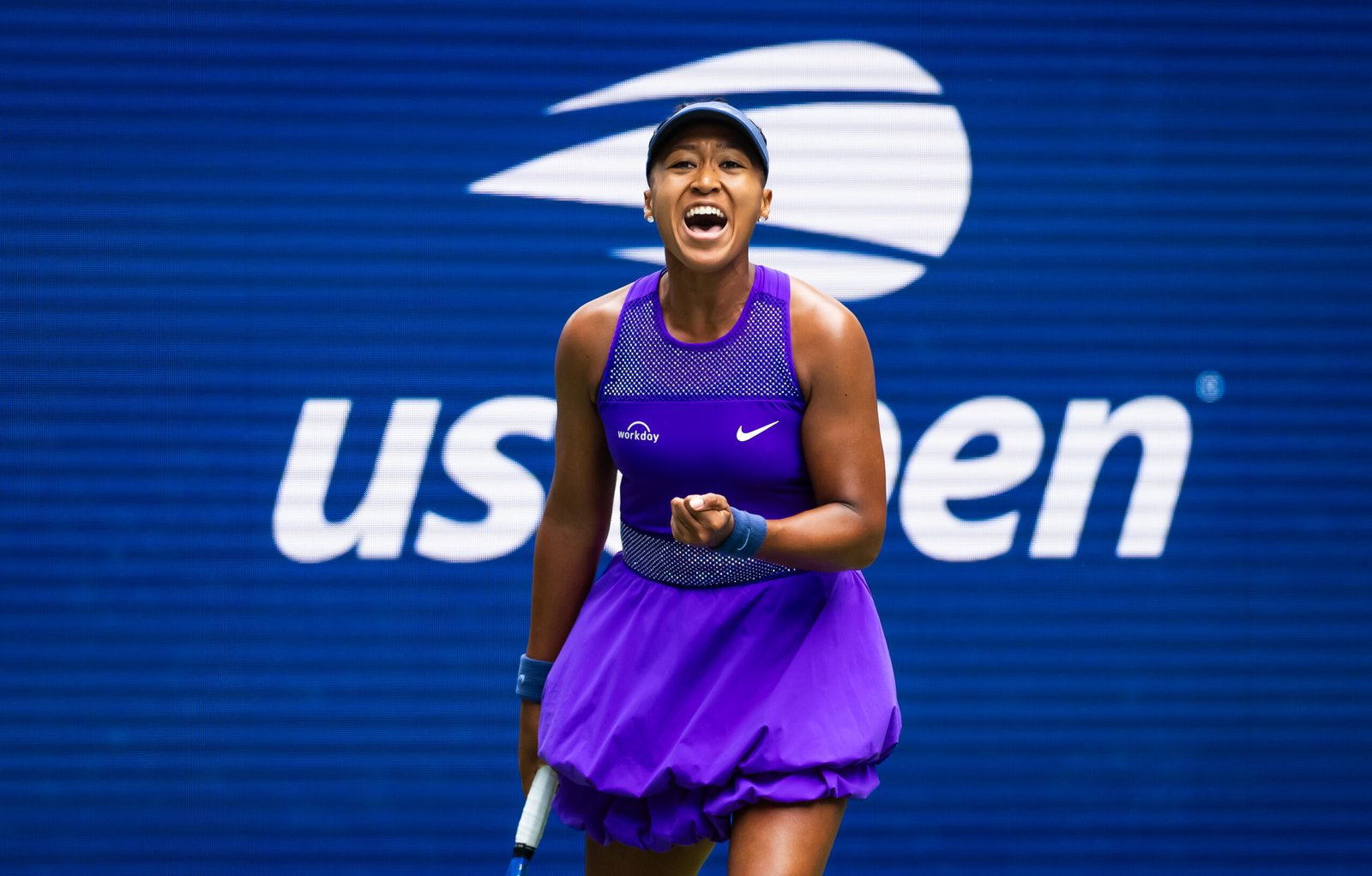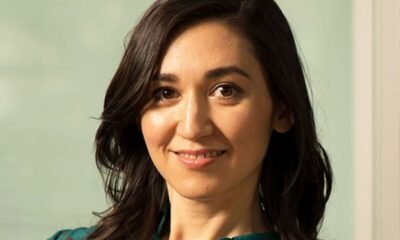Top Stories
FDA ends emergency use authorization for Covid vaccines

WASHINGTON — The Food and Drug Administration on Wednesday approved updated Covid boosters, but removed emergency use authorizations for the vaccines, in a set of moves that could make the shots more difficult to obtain for children under 5, in particular.
The moves were announced by Robert F. Kennedy Jr., the secretary of Health and Human Services, in a post on the social media site X, while the FDA did not put out a statement. Kennedy portrayed the actions as fulfilling a campaign promise to reverse Covid-era policies while still allowing people to access vaccines.
“I promised 4 things,” Kennedy wrote. “1. to end covid vaccine mandates; 2. to keep vaccines available to people who want them, especially the vulnerable; 3. to demand placebo-controlled trials from companies; 4. to end the emergency.
“In a series of FDA actions today we accomplished all four goals,” he continued.
Covid vaccine authorizations for all three available vaccines, Kennedy said, would now only be for higher-risk individuals, including those over 65 and those who have risk factors for developing severe Covid. Kennedy said that the Moderna vaccine is approved for those older than 6 months, the Pfizer/BioNTech vaccine for those older than 5 years, and the Novavax shot for those older than 12. Pfizer and Moderna confirmed the approvals of their booster shots in separate statements.
“These vaccines are available for all patients who choose them after consulting with their doctors,” Kennedy wrote. “The American people demanded science, safety, and common sense. This framework delivers all three.”
The Centers for Disease Control and Prevention lists more than two dozen conditions as increasing a person’s risk for severe outcomes after Covid-19 infection, including asthma, cancer, chronic kidney disease, chronic obstructive pulmonary disease, diabetes, and mood disorders such as depression.
The FDA also ended the emergency use authorization for Covid-19 convalescent plasma, according to an HHS spokesperson. The blood product is now available from manufacturers under the standard approval process.
As part of the approvals, the FDA is requiring several new clinical trials of Pfizer’s shots. It previously imposed similar demands on Moderna.
Pfizer said shipping of its vaccine will begin immediately and that it can provide a robust supply of the shots to pharmacies, hospitals, and clinics across the country. Moderna said its updated vaccines will be available within days.
“Protecting people at increased risk of severe outcomes from COVID-19 is imperative to public health as COVID-19 was responsible for up to 4 million outpatient visits and nearly half of a million hospitalizations last year,” said Stéphane Bancel, Moderna’s CEO, in a statement. “We are proud to help ensure Americans will have the latest protection against currently circulating strains this respiratory virus season.”
The federal moves have the effect of limiting the availability of Pfizer’s Covid-19 vaccine for children under age 5. The shot was previously available to children as young as 6 months via the emergency use authorization. That could make it more challenging for healthy children in that age group to receive Covid shots this fall.
The FDA approved Moderna’s vaccine for children as young as 6 months in July, but only for those with an underlying condition. Pfizer’s shot, which was developed in partnership with BioNTech, was seen as the main option for parents wishing to inoculate their young, healthy children against Covid.
It’s unclear how willing doctors might be to offer Moderna’s shot to young children off-label, and whether insurers will continue to pay for the immunizations.
Agency officials, like FDA Commissioner Marty Makary and top vaccine regulator Vinay Prasad, have argued that the risks of Covid vaccines outweigh the benefits for healthy children and noted that uptake of the shots, both for children and adults, has been low in recent years. Prasad overruled dozens of career scientists to limit Covid vaccine approvals three times in the past few months, including Moderna’s vaccine.
The approvals reflect the FDA’s new framework for Covid vaccines and Kennedy’s decision in May to stop recommending the shots for healthy children and pregnant people.
The restrictions, however, do not align with some experts’ analysis of the risks and benefits of the Covid vaccine. The American Academy of Pediatrics called them “deeply troubling” and said the shots should be available for all children ages 6 months through 23 months.
Covid is more likely to send babies to the hospital compared to older kids, according to data presented to the Centers for Disease Control and Prevention in June. Last week, the American Academy of Pediatrics recommended Covid shots for all children between 6 months and 23 months, as well as children over 2 at risk for severe disease. The Vaccine Integrity Project, a new group formed by public health experts trying to promote vetted vaccine information to counter the vaccine-skeptical Trump administration, echoed the AAP’s recommendations.
Hundreds of millions of people have received the Covid vaccine, and outside of an increased risk of myocarditis, researchers have seen few major side effects.
Johns Hopkins vaccine expert Anna Durbin said the rate of deaths and severe illness due to Covid are low in younger populations. But the disease still comes with risks, and is not pleasant or convenient for kids to have.
“Bad things happen, and we know that these vaccines are incredibly safe in this population,” said Durbin, who is an investigator on a Lyme disease vaccine trial that’s sponsored by Pfizer. “They can get sick, and it can affect parental leave and work and all of that.”
After the AAP issued its vaccine recommendations, Kennedy attacked the group on social media, accusing the organization of bias because it has accepted donations from pharmaceutical companies. The AAP and the CDC’s Advisory Committee on Immunization Practices have historically been in sync. But in June, Kennedy fired all 17 ACIP members and reconstituted the panel with seven appointees who have a documented history of vaccine skepticism.
The result is a balkanization of vaccine policy, with parents and health care providers forced to choose between conflicting recommendations when deciding whether to vaccinate children.
As part of the approvals, the FDA will require a raft of clinical trials from Pfizer. Like Moderna, Pfizer and BioNTech have committed to a large randomized controlled trial of their Covid vaccine in adults aged 50 through 64 years without conditions that put them at high risk for Covid-19. The exact design of the study was not disclosed, but the FDA’s approval letter said that the study should start by Nov. 30, with interim results by May 31, 2026, and final report completion by January 30 2027. An approval letter sent to Moderna said its similar efficacy study should also begin Nov. 30, complete by January 31, 2027, and have a final submission by the end of 2028.
The FDA has also required Pfizer to conduct another large placebo-controlled study examining whether patients who receive the vaccine ever continue to have SARS-CoV-2 spike antigen, the protein produced by the vaccine, long after it would be expected to have disappeared and whether they develop self-reported symptoms of “post-Covid-19 vaccination syndrome” or long Covid. A controversial study said that in rare cases patients develop such a syndrome and that in a few there was detectable spike protein long after the vaccine was received. Many researchers have been skeptical of the result. That study is to be completed by April 30, 2027.
Top Stories
Osaka’s reset comes full circle with win over Gauff at the US Open

NEW YORK — This was a fourth-round match with unusually large consequences, a highly charged litmus test, a gut-check in real time.
After missing the entire 2023 season on maternity leave, four-time Grand Slam champion Naomi Osaka has expressed frustration with her lack of progress. When would her game regain that ethereal major-winning quality?
Coco Gauff, even in the wake of a title at Roland Garros, turned to biomechanics specialist Gavin MacMillan just before the US Open, willing to sacrifice short-term results by playing the long game. Could she rely on her great strengths of speed and competitive fire while making significant adjustments to her serve and forehand?
The answers arrived in only 64 minutes on Monday in Arthur Ashe Stadium as Osaka dropped a decisive 6-3, 6-1 decision on Gauff to advance to the quarterfinals. It’s Osaka’s first major quarterfinal since winning the 2021 Australian Open.
It was reminiscent of the memorable match between the two here six years ago. Osaka, at the height of her powers, dispatched a 15-year-old Gauff 6-3, 6-0 in a third-round match that ended with tears. The difference is that Gauff was seeded No. 3 here and Osaka was No. 23.
“I mean I’m a little sensitive — I don’t want to cry,” Osaka said afterward. “Honestly I had so much fun out here.
“This is my favorite court in the world, and it means so much to be back here.”
Much has been made of Osaka’s move to coach Tomasz Wiktorowski. And while Iga Swiatek’s former coach has been a boon to her confidence, the difference between the 2024 Osaka and this year’s edition might just be fitness — and the confidence that brings.
Even earlier this year, she appeared sluggish at times, impatient to end points quickly. Against Gauff, Osaka moved exceptionally well, weathered long rallies and stayed in a visibly positive frame of mind. Her intensity was palpable.
So was her patience. Osaka won 16 of the 24 rallies that went five shots or more. She also converted each of the four break points she earned. Osaka next plays Karolina Muchova, a three-set winner against Marta Kostyuk.
Gauff, meanwhile, consistently struggled with her forehand and service game. There were five double faults, but the forehand was the real issue. Gauff had 20 unforced errors on that side. On this occasion, even her usually reliable backhand sometimes broke down.
Even early on, Gauff’s forehand was fluky (five errors) and Osaka broke and then held at love for a 2-0 lead.
But while Gauff — with a tweaked toss — had eased into her service games in the opening rounds, she came out firing against Osaka. She stroked two aces in her second service game and the other two first serves were unreturned. They were all 110 mph-plus.
That break was the only margin until Gauff, trailing 5-3, was broken again. Two double faults, in addition to two groundstroke errors, gave Osaka the set in 31 minutes.
With the match on serve at 3-2 in the second set, Gauff served into trouble. A double fault started it and an errant backhand closed it as Osaka converted her third break point in her third try.
Osaka scored one last break to secure the match.
Osaka is realistically trying to win her third US Open title in eight years. This is her fifth trip to the quarterfinals of a Grand Slam. It’s worth noting that she won the first four.
The turning point, Osaka said, came last month in Montreal.
That was when Osaka came back from down a set and 5-3, saving two match points, to defeat No. 13 seed Liudmila Samsonova in a match that went more than two-and a-half hours.
“Since then, I’ve been thinking anything’s possible,” Osaka said in her on-court interview. “You just have to have a smile on your face.”
Top Stories
The Rock Sobs as ‘The Smashing Machine’ Gets 15-Minute Venice Ovation

Is Dwayne Johnson headed for the Oscars?
Judging by the rapturous reaction to his performance as wrestler Mark Kerr in “The Smashing Machine” at the Venice Film Festival on Monday night, that seems to be the consensus out of Italy.
The 53-year-old actor sobbed uncontrollably as the audience on the Lido erupted into 15-minute standing ovation, one of the longest at this year’s festival so far.
Johnson, who once performed as the WWE wrestler known as the Rock, has been the star of such commercial fare as “The Mummy,” “Black Adam” and “Baywatch.” But he goes much deeper in his next project, which will be released by A24 in November, as a ’90s fighter with demons.
Johnson stars opposite Emily Blunt in the film, who plays Kerr’s girlfriend Dawn Staples. During the ovation, Benny Safdie — the film’s director — hugged both his stars and joined Johnson in shedding tears of joy as the clapping continued. Adding to the waterworks, Kerr also wept as the credits rolled.
As the hooting and cheering stretched on, “The Smashing Machine” proved to be the most emotional premiere on the Lido since Brendan Fraser collapsed into tears four years ago, launching his Oscar campaign for “The Whale.”
Before the screening started, one fan shouted Johnson’s signature WWE line, “Can you smell what the Rock is cooking?!” — prompting laughter from the man of the hour.
Johnson was in good spirits throughout the night. He worked one of Europe’s most glamorous red carpets, signing autographs for fans and snapping selfies. This year’s 82nd edition of Venice has been packed with stars — ranging from George Clooney to Julia Roberts to Emma Stone — and Johnson and Blunt added to the A-list wattage of the festival that’s now known as the official launch of awards season.
Johnson is nearly unrecognizable “The Smashing Machine,” undergoing pounds of prosthetics to portray the beefy two-time UFC Heavyweight champ. The actor previously told Variety that he was drawn to “The Smashing Machine” because Safdie is someone who “continues to push the envelope when it comes to stories that are raw and real; characters that are authentic and at times uncomfortable and arresting.”
“I’m at a point in my career where I want to push myself in ways that I’ve not pushed myself in the past,” said Johnson, best known for franchise fare like “Jumanji” and the “Fast and Furious” movies. “I want to make films that matter, that explore a humanity and explore struggle [and] pain.”
“The Smashing Machine” marks the solo feature directorial debut of Benny Safdie, who worked with his older brother, Josh, on indie favorites like “Good Time” and “Uncut Gems.” (Josh will also make his solo feature debut this year with A24’s “Marty Supreme,” a sports drama starring Timothee Chalamet.) “The Smashing Machine” reunites Benny Safdie and Blunt, who shared a memorable scene in Christopher Nolan’s historical epic “Oppenheimer,” as well as Johnson and Blunt, who co-starred in Disney’s action-adventure “Jungle Cruise.”
Top Stories
Naomi Osaka beats Coco Gauff to reach US Open quarterfinals

NEW YORK — Naomi Osaka eliminated Coco Gauff 6-3, 6-2 in 64 minutes at the US Open on Monday with a far more confident and consistent brand of tennis to reach her first Grand Slam quarterfinal in more than 4½ years.
Osaka advances to her fifth major quarterfinal, and first since giving birth to daughter Shai in July 2023. Every time Osaka has made the quarterfinal round of a major, she has gone on to win it, her last Slam coming at the 2021 Australian Open.
The No. 23-seeded Osaka was better throughout than No. 3 Gauff, whose repeated mistakes really made the difference in Arthur Ashe Stadium. Osaka never faced a break point and lost just six points on her serve.
“I was super locked in, to be honest. I was really locked in,” said Osaka, a 27-year-old who was born in Japan and moved to the U.S. with her family at age 3. “I felt like everyone wanted to watch a really great match, and I hope that’s what you got.”
Osaka displayed the demeanor, big serve and booming strokes that have carried her to four major championships, all on hard courts. That includes titles at the US Open in 2018 and 2020, and at the Australian Open in 2019 and 2021.
It was at the French Open later in 2021 that Osaka helped spark a global conversation about mental health by revealing she felt anxiety and depression. She then took a series of breaks from the tour.
That most recent trophy at Melbourne Park was the last time Osaka had even made it as far as the fourth round at any Slam event until this match against Gauff, a 21-year-old from Florida who owns two major trophies. The first came at Flushing Meadows in 2023 and the second at the French Open this June.
For Osaka, this marks a real return to her best play since she returned to the tour after a 17-month maternity leave.
“I’m a little sensitive and I don’t want to cry, but honestly, I just had so much fun out here,” said Osaka, who first played Gauff back at the 2019 US Open, also in Ashe, and won that one, too.
“I was in the stands like two months after I gave birth to my daughter, watching Coco. I just really wanted an opportunity to come out here and play,” Osaka told the crowd. “This is my favorite court in the world, and it means so much for me to be back here.”
Gauff came out jittery at the start. Her serve was fine; other strokes were the problem. She finished with 33 unforced errors — way more than Osaka’s 12.
Trying to rework her serve during this tournament with the help of biomechanics expert Gavin MacMillan, Gauff got broken right off the bat and was down 2-0 after just five minutes, dropping eight of the initial nine points while making five unforced errors.
Whether because it’s what the prematch strategy dictated or because of how the beginning unfolded, Gauff cranked up the velocity in her second service game. The results were unimpeachable. She hit four first serves in — each arriving no slower than 110 mph, with a high of 115 mph — and held at love with a pair of aces and a pair of service winners.
Still, this is where the key difference was: Osaka used her big forehand, her best stroke, to go after Gauff’s forehand, her worst stroke, and it worked wonders. By the end of the first set, Gauff had made 16 unforced errors and Osaka only five.
ESPN Research and The Associated Press contributed to this report.
-

 Business3 days ago
Business3 days agoThe Guardian view on Trump and the Fed: independence is no substitute for accountability | Editorial
-
Tools & Platforms3 weeks ago
Building Trust in Military AI Starts with Opening the Black Box – War on the Rocks
-

 Ethics & Policy1 month ago
Ethics & Policy1 month agoSDAIA Supports Saudi Arabia’s Leadership in Shaping Global AI Ethics, Policy, and Research – وكالة الأنباء السعودية
-

 Events & Conferences3 months ago
Events & Conferences3 months agoJourney to 1000 models: Scaling Instagram’s recommendation system
-

 Jobs & Careers2 months ago
Jobs & Careers2 months agoMumbai-based Perplexity Alternative Has 60k+ Users Without Funding
-

 Funding & Business2 months ago
Funding & Business2 months agoKayak and Expedia race to build AI travel agents that turn social posts into itineraries
-

 Education2 months ago
Education2 months agoVEX Robotics launches AI-powered classroom robotics system
-

 Podcasts & Talks2 months ago
Podcasts & Talks2 months agoHappy 4th of July! 🎆 Made with Veo 3 in Gemini
-

 Podcasts & Talks2 months ago
Podcasts & Talks2 months agoOpenAI 🤝 @teamganassi
-

 Mergers & Acquisitions2 months ago
Mergers & Acquisitions2 months agoDonald Trump suggests US government review subsidies to Elon Musk’s companies





















